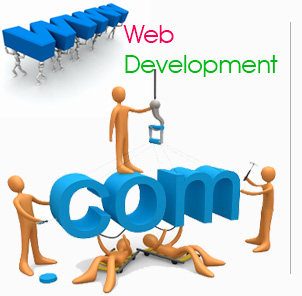The Allure of Minimalist Design: A Timeless Fashion

Over the past few years, the field of web development and designing websites has seen a notable shift, introducing an array of trends that regularly mold the digital experience. One of the most captivating of these movements is minimalist design, a method that strips away the ornateness of elaborate visuals and adopts minimalism. With its straightforward layouts, vibrant hues, and focus on user-friendliness, this style has become a favored choice for countless developers and designers aiming to design user-friendly websites.
This style is not just a short-lived trend; it represents a philosophy that places importance on utility over form, improving user experience while maintaining visual attractiveness. As websites evolve to satisfy the demands of contemporary users, the appeal of this approach underscores the significance of clarity and efficiency in both web development and web design. By adopting this trend, creators can construct platforms that are both visually striking but also user-friendly, ensuring that visitors can discover what they are looking for rapidly and effortlessly.
Comprehending Minimalist Design
Flat design is a clean design approach that emphasizes minimalism and functionality. It removes three-dimensional elements, such as shadows and gradients, which can create a busy appearance. Instead, this approach uses bold colors, simple icons, and clean typography to create an aesthetic and direct user experience. This design language focuses on the fundamentals, allowing users to browse websites and apps without distractions.
The rise of flat design can be linked to the increasing influence of mobile devices and the need for adaptive interfaces. As AppWeb expanded, designers understood the significance of creating interfaces that are user-friendly on compact displays. This design style aligns well with this need, prioritizing performance and functionality over ornamental features. By adopting the principles of flat design, developers can create applications that function optimally across different devices, ensuring a cohesive user experience.
Moreover, this approach fosters a sense of comfort and ease for users. Many popular platforms and applications have adopted this approach, leading to a trend where users associate flat design with modern, sleek, and effective interfaces. This connection has established flat design as a timeless trend that continues to develop, adapting to new technologies while retaining its fundamental principles. As website creation and design for the internet progress, flat design remains a crucial element in shaping the evolution of digital interactions.
Benefits of Flat-Design
This design style offers a clear, simplistic aesthetic that improves usability and user experience. By removing unnecessary elements such as shading and ornaments, flat design allows users to focus on the content and functionality of the website. This clearness promotes quicker navigation and a more straightforward understanding of how to interact with the UI, making it particularly attractive for modern web development.
A further significant advantage of flat design is its ability to adapt across different devices and screen sizes. The plainness of flat design ensures that elements remain visually uniform and reachable, regardless of whether the user is on a mobile phone, tablet, or desktop. This flexibility is crucial in today’s mobile-first world, where users expect seamless interaction with websites on any device.

Ultimately, flat design facilitates speedier loading times, which is key in retaining visitors and boosting search engine positions. By using fewer images and image-laden elements, websites can run more efficiently. This not only enhances user satisfaction but also aligns with the increasing emphasis on performance in web development, making flat design a wise choice for programmers looking to build captivating and efficient online experiences.
Future of Sleek Design in Web Development
As internet development continues to advance, minimalist design is likely to keep its significance due to its clarity and effectiveness. Users admire clean interfaces that allow for simple navigation, making clean design an excellent choice for modern websites. The clean aesthetic minimizes clutter and emphasizes on necessary content, which not only boosts user experience but also improves page load times, a crucial factor in web performance. This effectiveness is becoming increasingly important as mobile usage grows and users expect quick, responsive web applications.
Furthermore, the adoption of cutting-edge technologies such as responsive design and artificial intelligence will impact the future of simple design. Developers are experimenting with versatile layouts that can fluidly alter based on user engagement or device category. As a result, minimal design will possibly transform into more interactive and dynamic forms while still keeping its core values of clarity and simplicity. This balance between modern engagement and classic design will captivate both users and developers seeking creative yet accessible web solutions.
In conclusion, as accessibility becomes a paramount concern in web development, simple design provides an effective foundation for creating inclusive experiences. The distinct visual hierarchy essential to simple design helps screen readers and other assistive technologies communicate information more accurately. By emphasizing user-centric design, developers can ensure their websites cater to multifaceted audiences while maintaining the timeless appeal of minimal aesthetics. This focus on accessibility will not only advantage businesses by reaching a wider audience but will also strengthen flat design's position as a fundamental trend in the future of web development.
